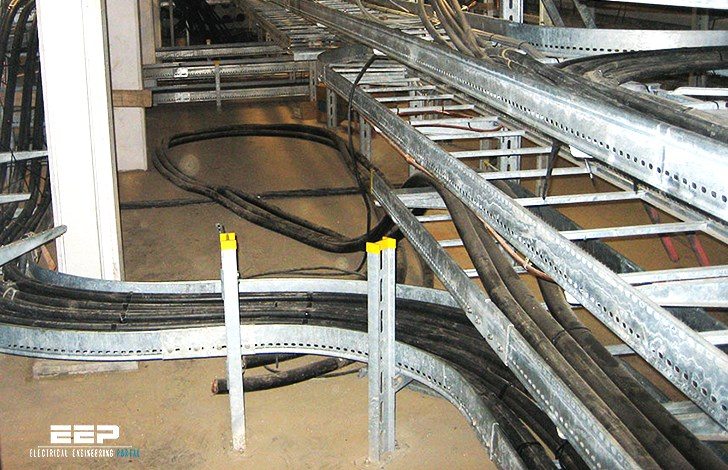One of the most important choices when designing a cable tray system for corrosive or outdoor environments is the material. Steel cable tray with a Hot-Dip Galvanized after Fabrication (ASTM A123) finish has been used successfully for many years. Inc[……]
Author Archives: Danlic
Grounding Inspection of Steel and Aluminum Cable Tray Systems
It is essential that the grounding of cable tray systems, including the cables in the tray systems, is inspected for compliance with the grounding requirements in the National Electrical Code (NEC) BEFORE the cabling in the tray is energized and BEFO[……]
Equipment Grounding Conductors for Cable Tray Systems
Cable tray wiring systems have excellent safety and dependability records. These excellent records are the result of cable tray’s unique features plus the proper design and installation of the cable tray wiring systems. The intent of this article is[……]
Cable Tray Systems in Ducts, Plenums and Other Air Handling Space
The objective of this article to provide clear information as to the use of cable tray in those areas covered by Section 300-22 of the 1996 National Electrical Code.
Section 318-4 Uses Not Permitted states that “Cable tray systems shall not be use[……]
Cable Tray Wiring Systems Have Many Cost Advantages
Cost is usually a major consideration in the selection of a wiring system. This article provides information as to where cable tray wiring system cost savings will occur; however, it is not the intent of this article to state that the selection of a[……]
Bonding Jumpers Not Required for Standard Cable Tray Splice Plates
It is not necessary to install bonding jumpers in parallel with the standard rigid aluminum or steel one-piece metallic bolted side rail splice plates that are the connections between the cable tray sections. Here, the use of bonding jumpers does not[……]
Caution in Using Cable Tray Covers Outdoors
Improperly secured covers on outdoor cable trays can cause a serious safety hazard in high winds. In the majority of cases, covers are not used on cable trays for technical or safety reasons, but due to the “raceway complex,” a feeling by specifiers[……]
Best Practice Guide to Cable Ladder and Cable Tray Systems
 Best practice guide to cable ladder and cable tray systems (photo credit: elektro-ka.si)
Best practice guide to cable ladder and cable tray systems (photo credit: elektro-ka.si)
Cable ladder and cable tray systems
The following recommendations are intended to be a practical guide to ensure the safe and proper installation of cable la[……]
Seasons Greeting from Bonet Cable Tray
Thank you for all the cooperations to Bonet Cable Tray. We expect your continuous support to our wire mesh cable tray business in year 2017. Merry Christmas & Happy New Year!
 [……]
[……]
Circuit Integrity of Cable Tray Wiring Systems During Natural Disasters
The January 17,1994 Los Angles, California earthquake and the hurricanes of past years emphasize that the design and installation of structures and systems that may be subjected to these types of natural disasters should be such that the damage is ke[……]